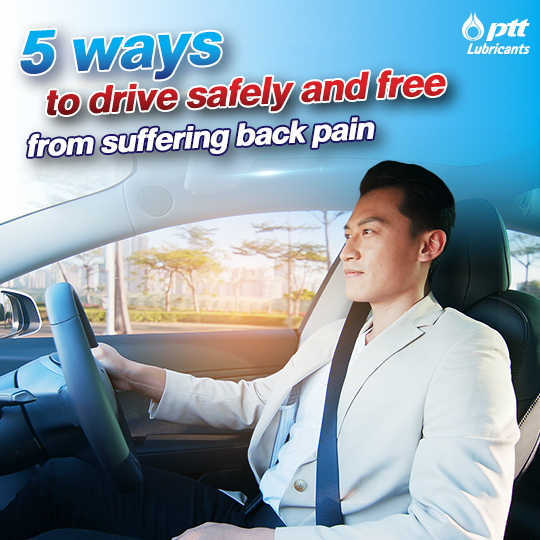
5 ways to drive safely and free from suffering back pain
Who said sitting posture is not important when driving? Sitting in the correct posture helps reduce pain while enhancing safety during the drive. Especially for people with office syndrome, staying in a driving position for a long time may even worsen the pain.
Therefore, correcting your sitting posture along with adjusting the driver seat in accordance with the ergonomics will relieve the pain of a long drive for drivers.
Here are the adjustment techniques that you should give them a try!
1. Adjust the height of the seat
The height of the seat directly affects our back. If the level is too low, your back will have to bend more which can lead to back pain. It is recommended that the driver adjust the level of the seat until the vision around the car, especially the front, becomes clear. In short, there should be a 1-palm gap between your head and the car ceiling, or alternatively, adjust the seat as high as possible and raise the end of the seat up slightly. This will have a positive effect on road visibility and it will be easier for you to control the car as well.
2. Adjust the leg distance
In order to allow a comfortable leg distance, it is recommended that the driver should sit with the hip as deep as possible, and adjust the seat distance to give your knees a small bend to make sure that you can reach the brake and the accelerator comfortably. This could also reduce injuries in case of a frontal crash. Keep in mind that your legs should not be too straight since it would be uncomfortable to step on the brake pedal.
3. Adjust the backrest
In addition to adjusting the height, adjusting the backrest is also important since it could help protect your back. Your backrest should be as upright as possible while still being comfortable. The backrest should lean slightly to about 110 degrees to give you enough distance from the steering wheel. Make sure you can still place your hand on the steering wheel easily and your arms are not too tense.
4. Adjust the position of the head restraint
Apart from adjusting the seat, the leg distance, the steering wheel and the backrest, there is one more point that is equally important which is the head restraint. To adjust the head restraint to fit your head, make sure that your ears are positioned in the center of the head restraint when viewed from the side. This way the head restraint will help cushion the impact for your head when hit from behind in case of an accident. An extra neck pillow may also be used to reduce neck pain.
5. Adjust the steering wheel distance
Holding the steering wheel properly can also help reduce back pain while driving as well as makes it easier to control the car. The steering wheel should be adjusted to the height that does not exceed our shoulder height and the angle of the holding position after adjustment should stay on the 3 and 9 o'clock. With this adjustment, we will be able to turn the steering wheel quickly and have a better grip on the wheel. This can also help reduce shoulder pain. As for the distance adjustments, make sure both arms can be bent, not too stretched. For the height adjustment, the steering wheel must be adjusted until the gauge is entirely visible. It is recommended that you do not hold the steering wheel with one hand or lose grip as it may slip out of your hands making you lose control of the car.
Following these 5 methods may help relieve the pain for drivers. Especially those who have to drive long distances or spend a long time in the car, this will help you feel more comfortable when sitting and help you drive safely throughout the journey!